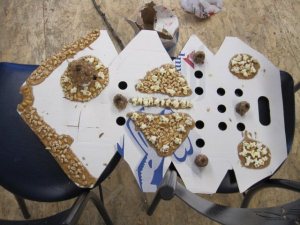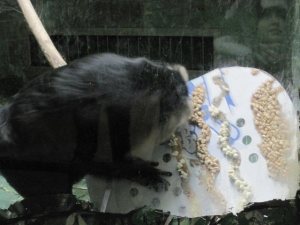Chris Reid and I just finished talking about the kookaburra on Zoo Knew (Sundays at 7:15 am on CJOB 68) . These birds can be seen in the Tropical House at the Assiniboine Park Zoo.
Kookaburra (aka: Laughing kookaburra): Is sometimes called the Bushman’s Clock because of its habit of calling in the morning and evening. Their call sounds like loud, raucous laughter.
.
Food: The kookaburra is a carnivorous bird and is known as a stand and wait hunter.
- The kookaburra eats both invertebrates (worms, insects, snails) and vertebrates (birds, rodents, lizards, amphibians and snakes)
- Small prey is crushed while larger prey is killed by bashing it against at branch or by dropping from a height.
.
Size: Length: 45 cm (18 in), Weight: 0.5 kg (1.1 lbs)
- The kookaburra is gray-brown above and gray-white on the head and underparts. It has a dark eye stripe and a barred tail. It has a long, stout (broad), dagger-like bill. It has a large head, a stubby tail and short legs.
.
Habitat: The kookaburra lives away from water in woodland and scrub. It is a tree (or wood) kingfisher, which is the most numerous of the three families of birds in the kingfisher group. The other two families are the river kingfishers and the lake kingfishers.
Distribution: South and East Australia. Introduced to Tasmania and other islands.
.
Find out more about the Assiniboine Park Zoo’s kookaburras here: http://www.assiniboinepark.ca/media/animals/pdf/Laughing%20Kookaburra.pdf
.
Compiled by Scott Gray, Zoo Education Director
References: Birds of the World (Paragon Publishing, 2005), the National Zoo, http://www.avianweb.com.



